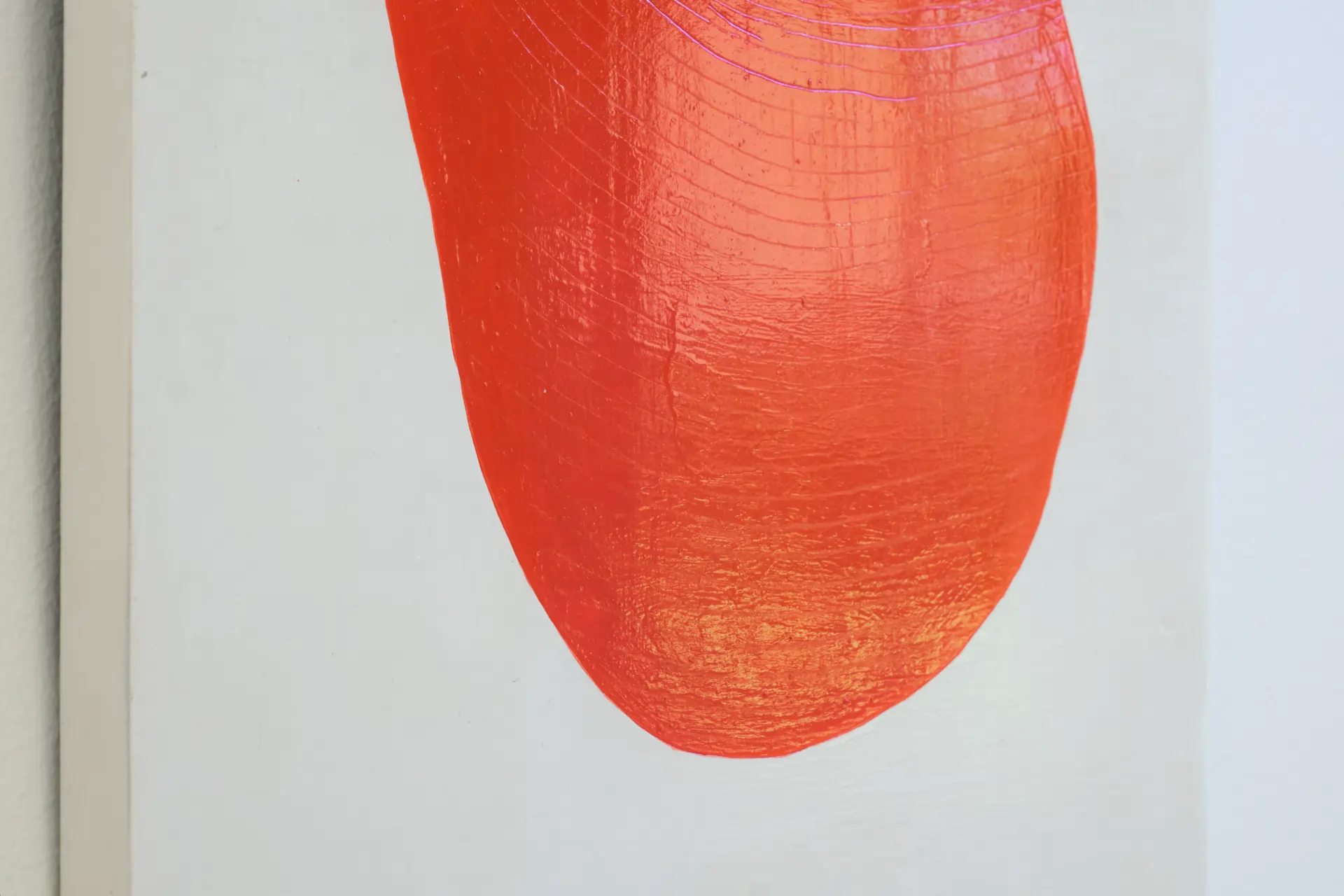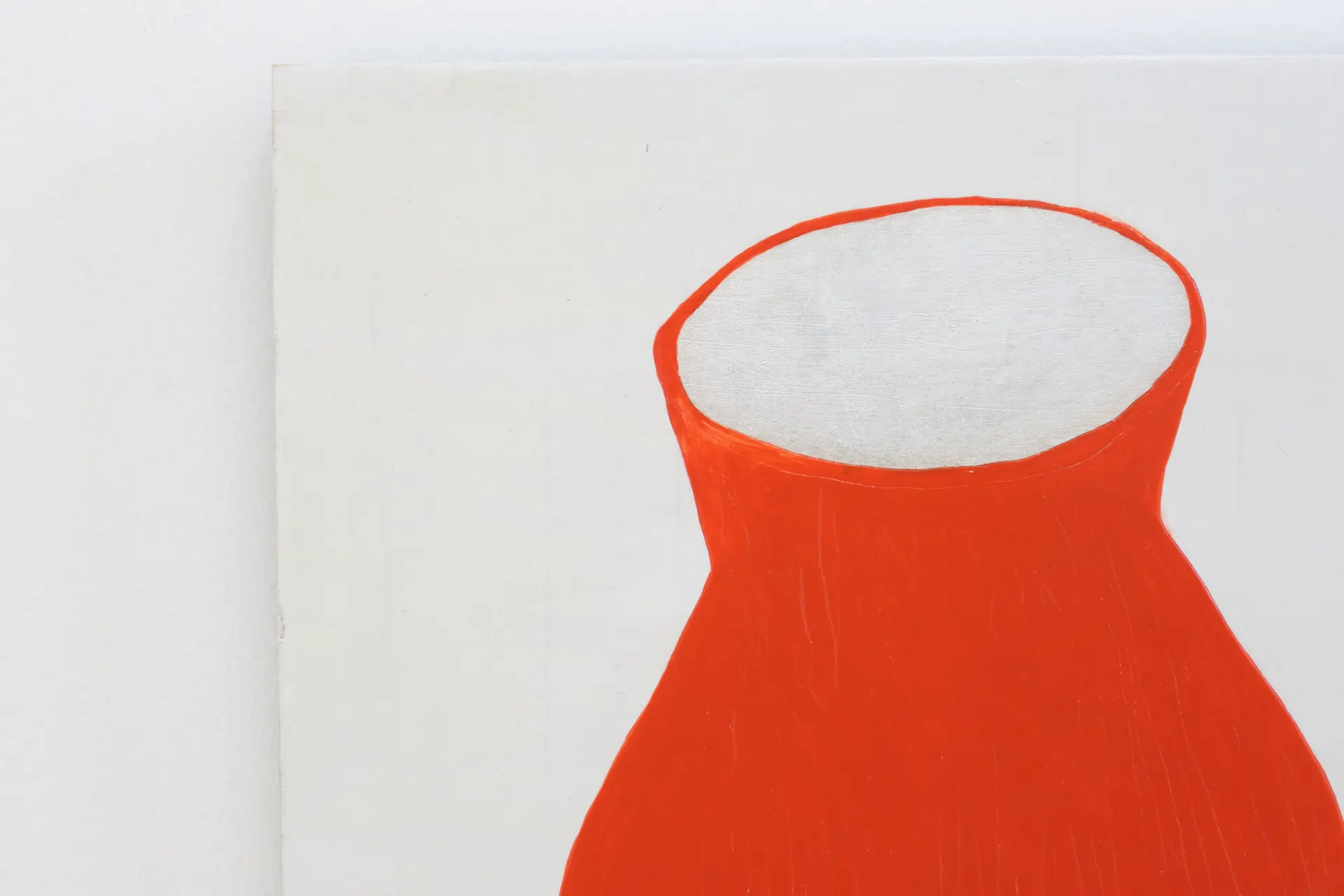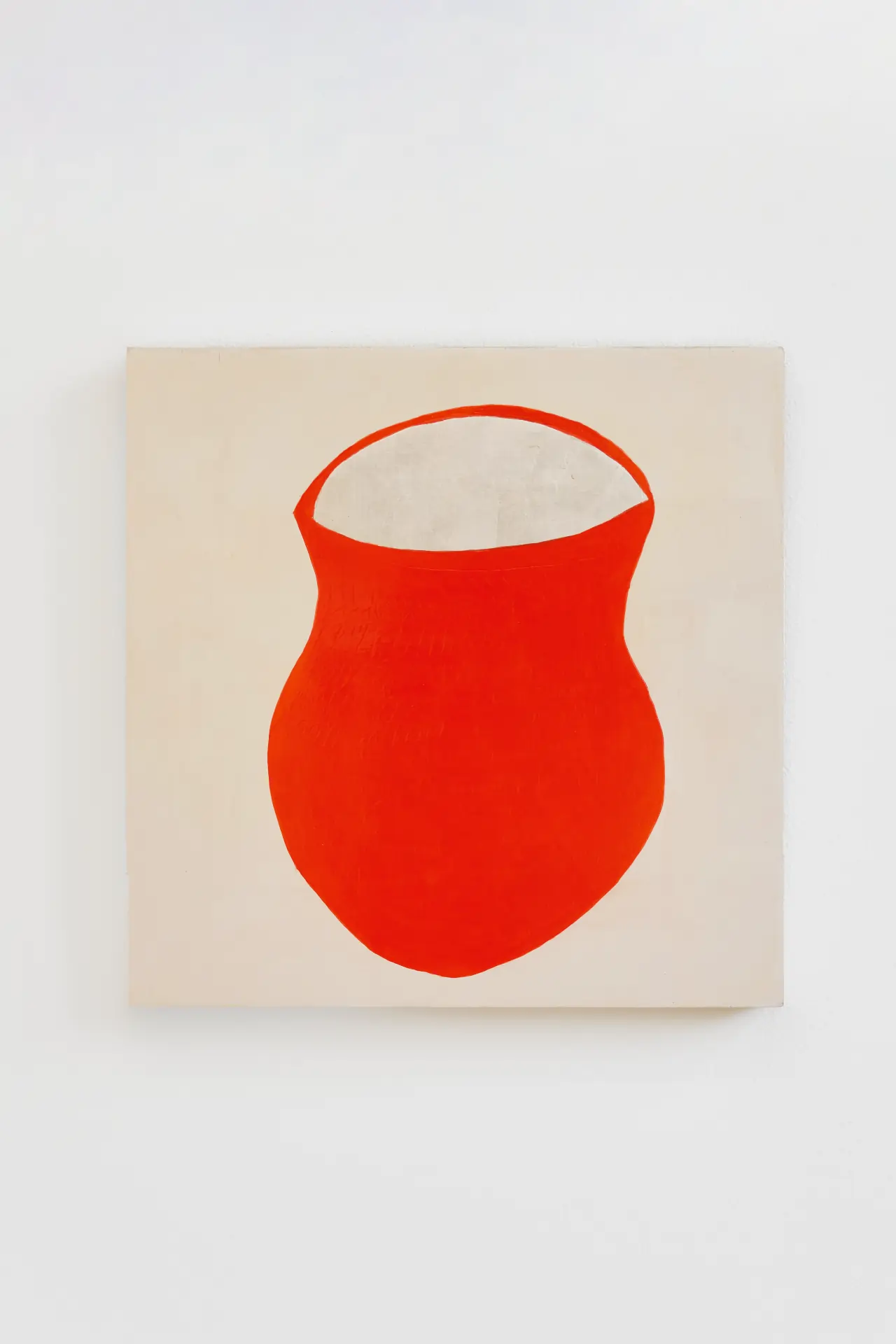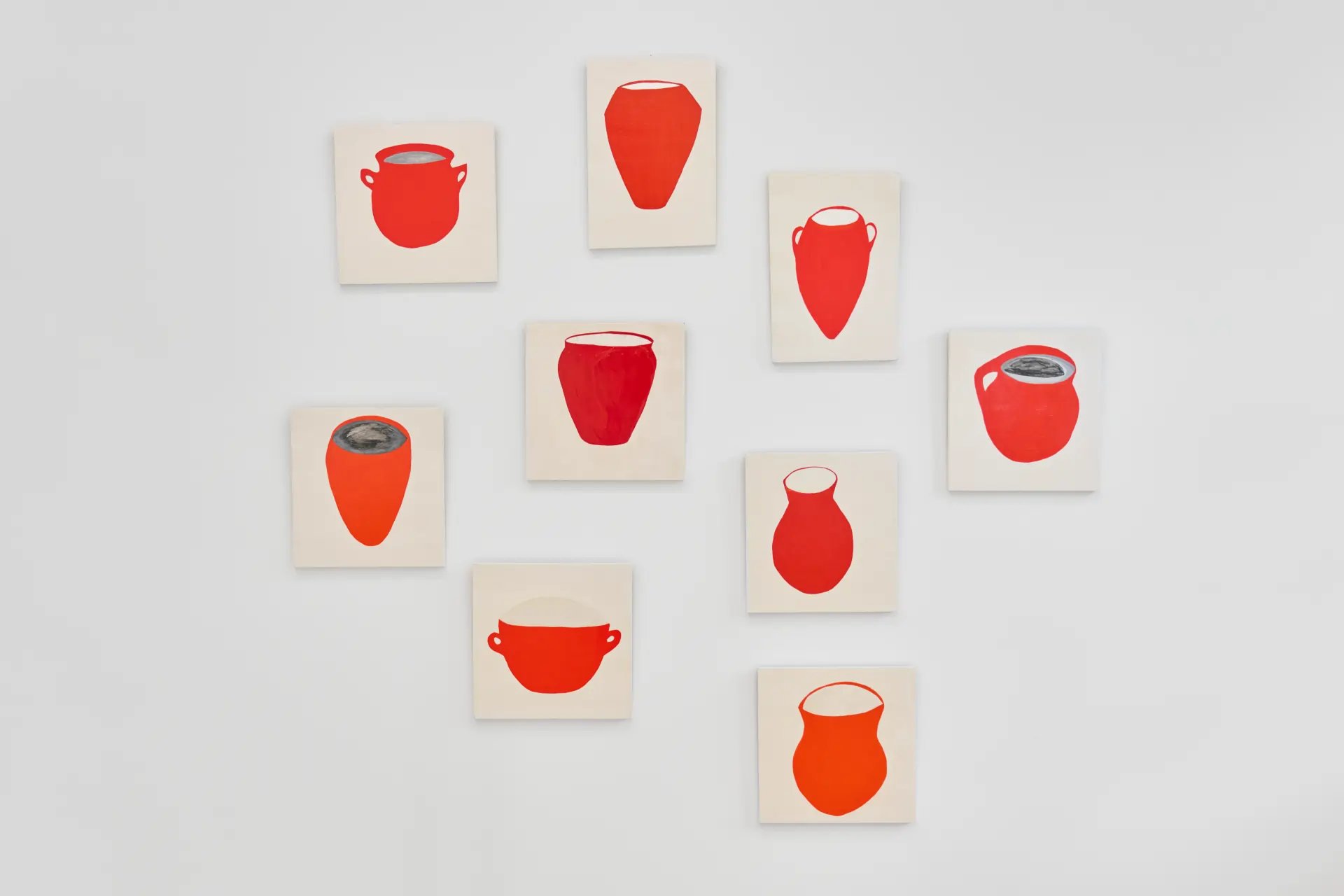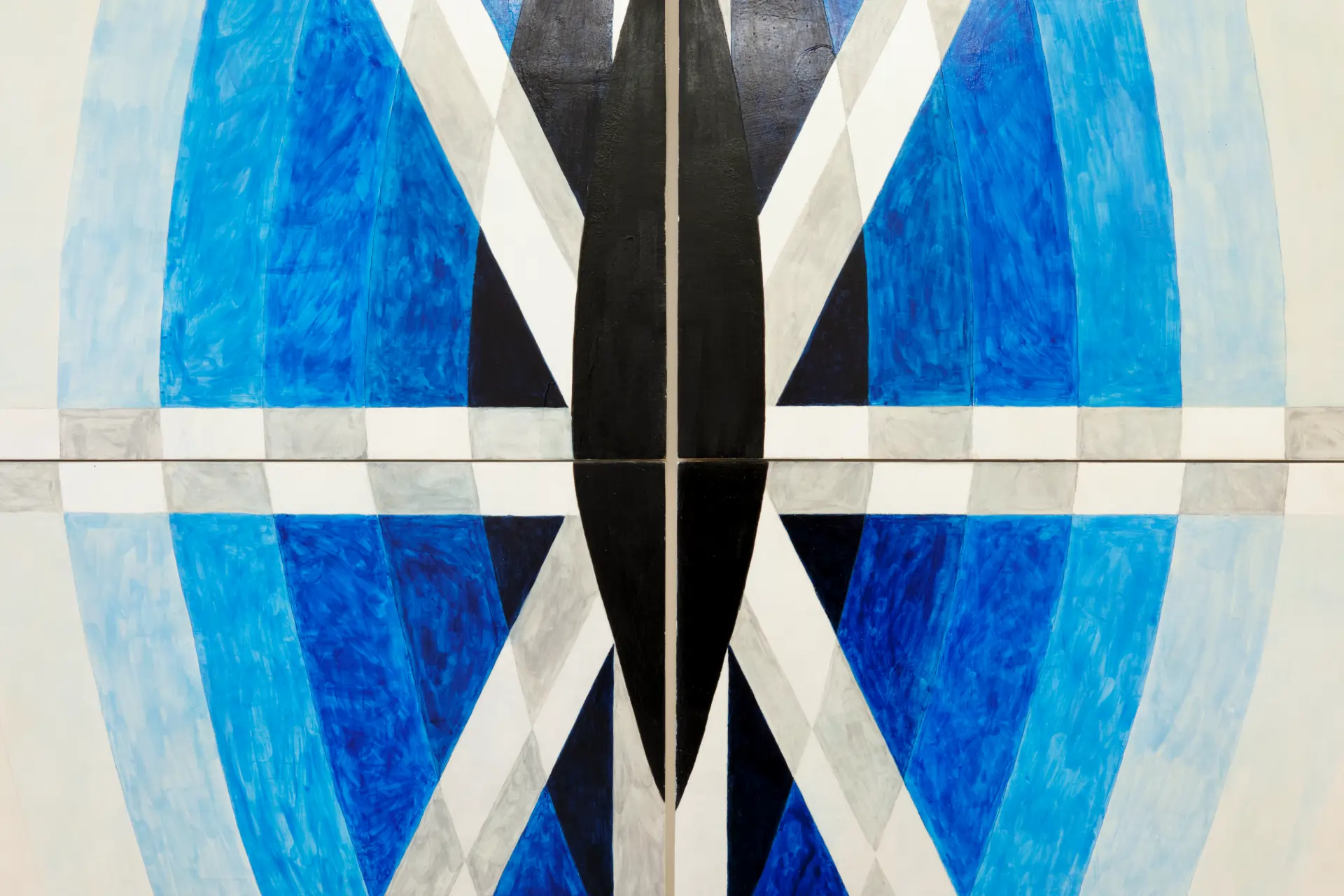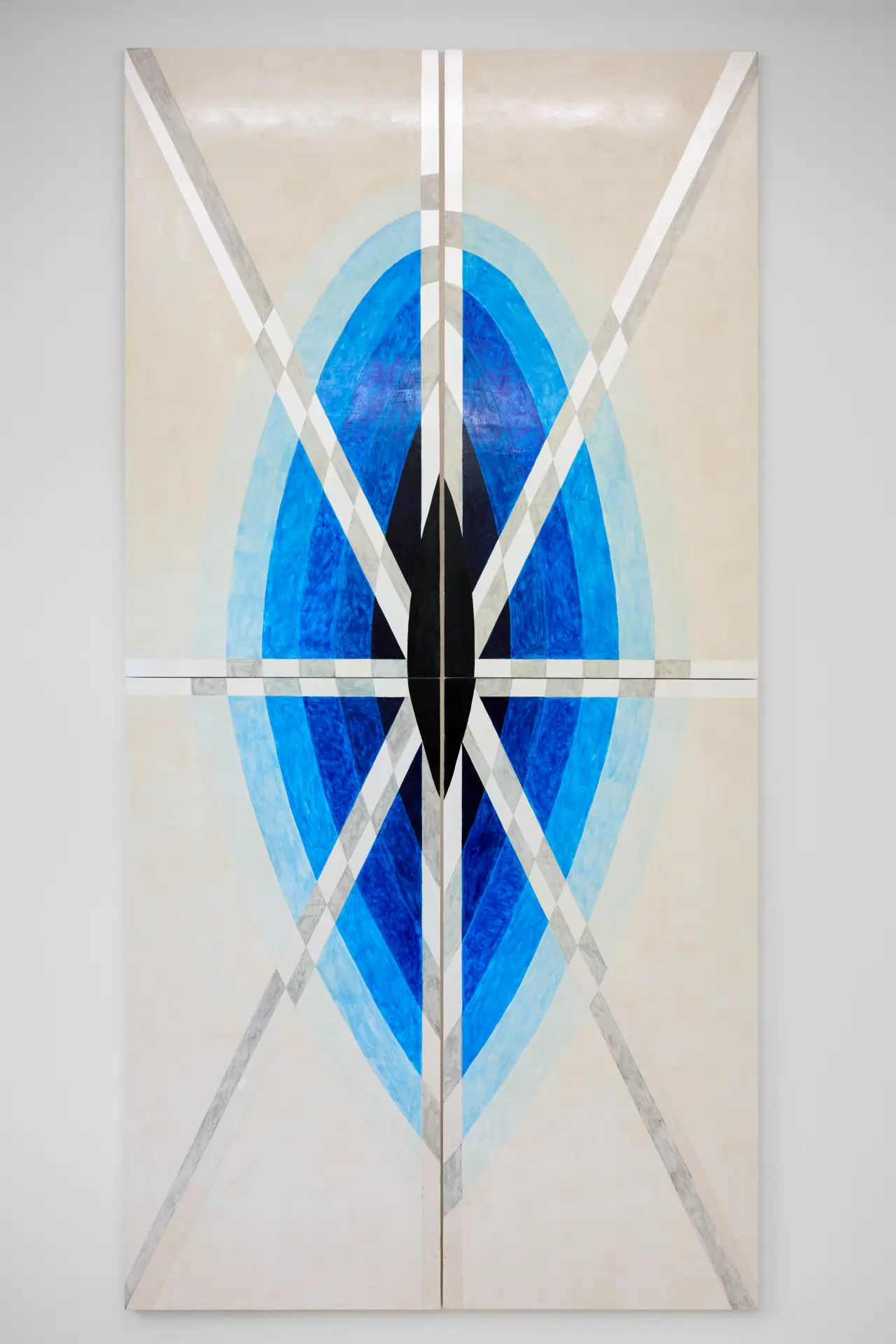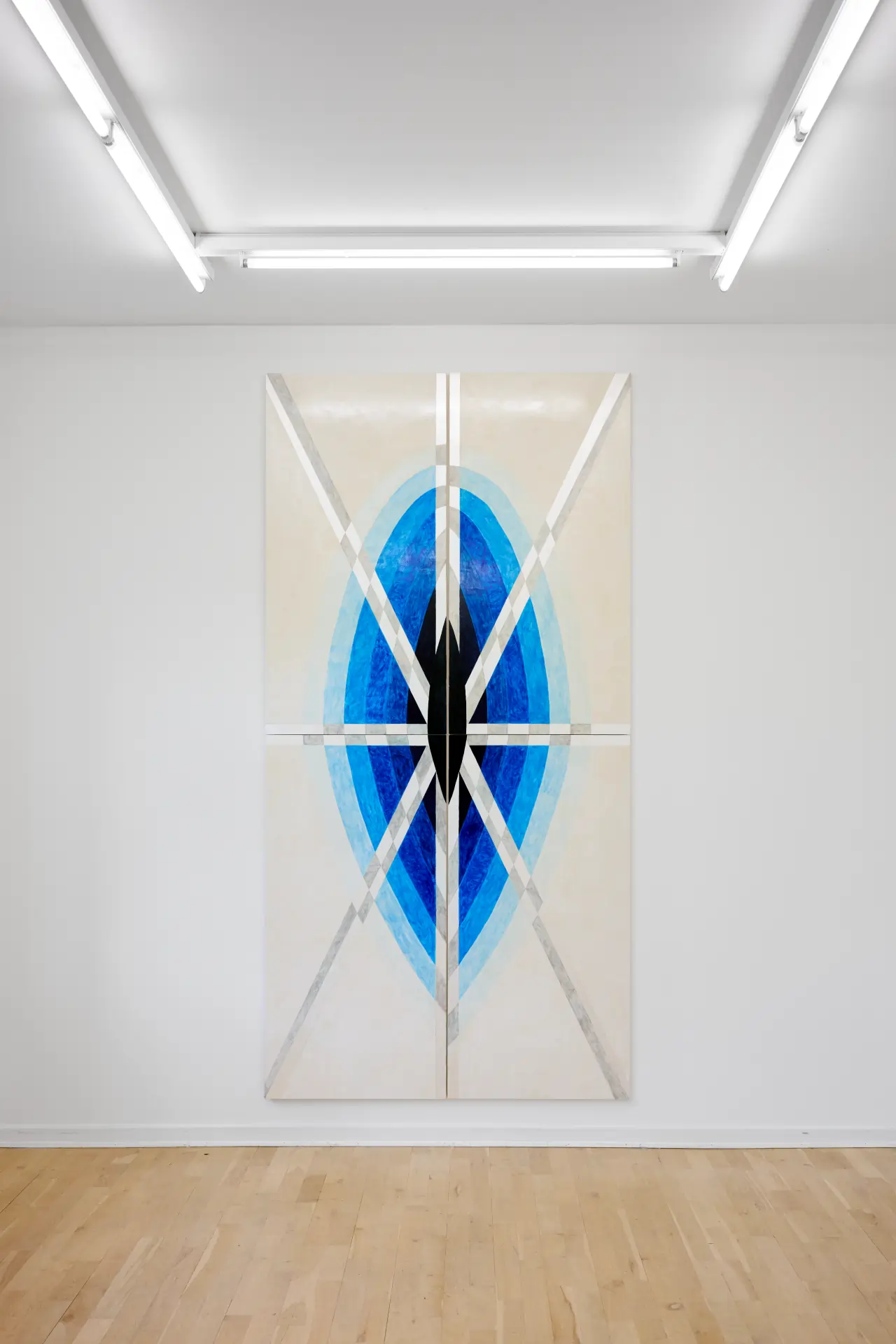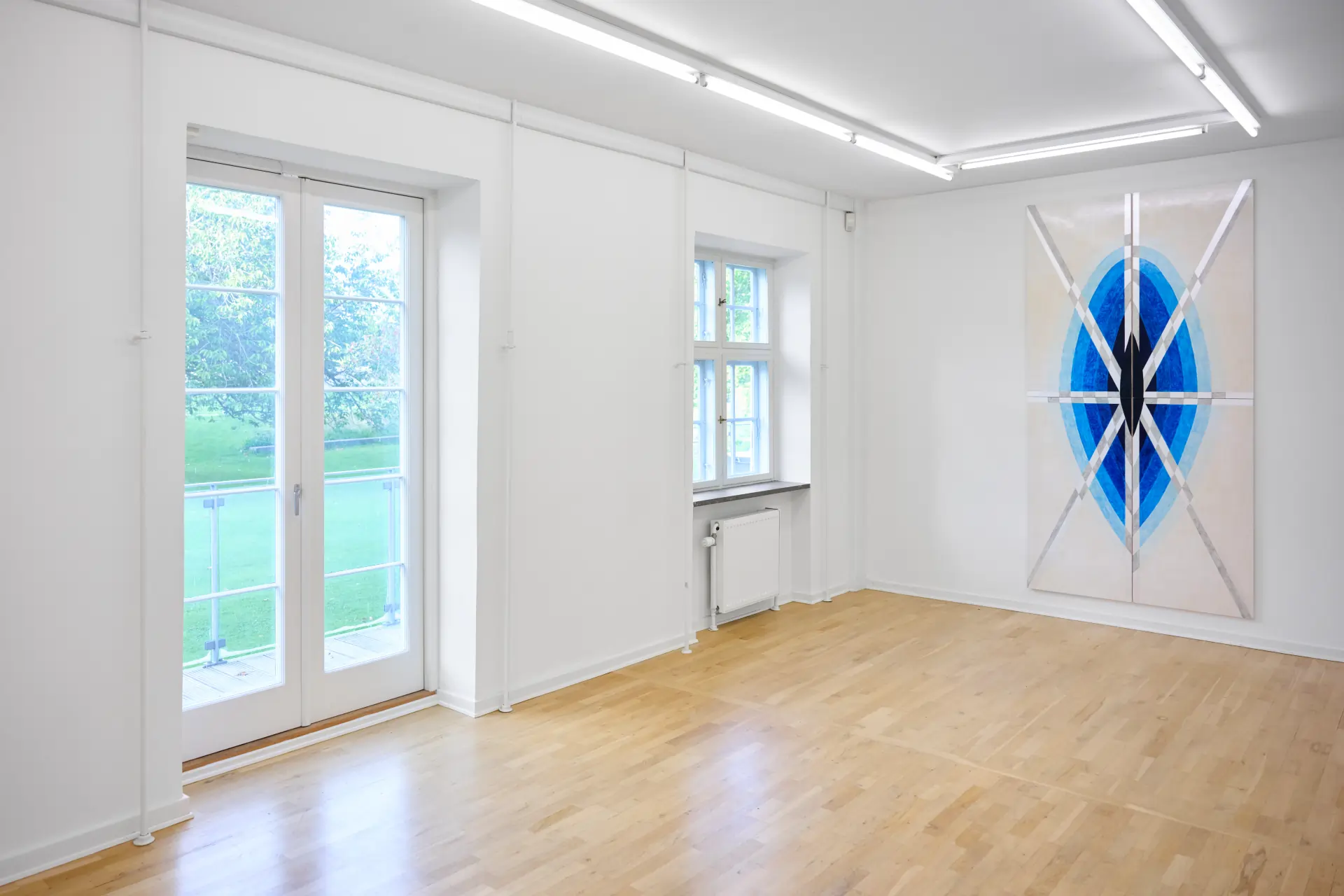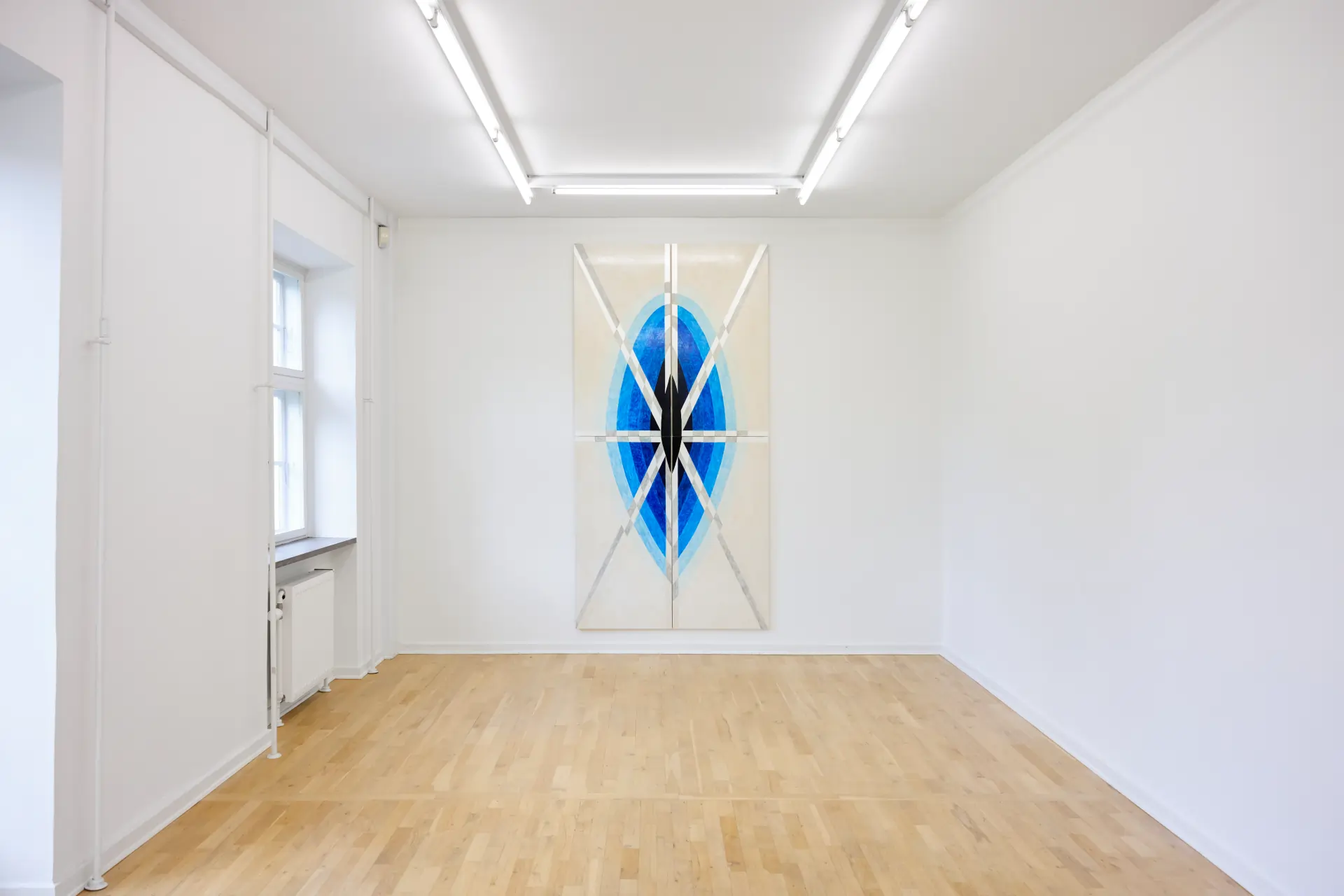Lake Life
Photos by Enneke Hempen
Lake Life Viborg Kunsthal 2025 – a group exhibiting with Mariana Gomes Gonçalves (PT), Gedske Ramløv (DK/I), Nada Prlja (MK), Rhoda Ting & Mikkel Bojesen (DK/AU) and Nina Wengel (DK)
In Nina Wengel’s room, each work is created using the complex icon painting technique, traditionally used in churches to depict sacred images.
The artist has painted a series of vessels evoking jars, jugs and vases, with simple, yet diverse shapes and surfaces, and in various shades of red. Each object has a glossy, oval opening, which can call to mind the calm plane of a lake or a perceptive eye, both in shape and reflective surface. Hung together as a group, the vessels can easily resemble a gathering of people gazing back at us.
Opposite the vessels, a large painting features a mandorla: the luminous, almond-shaped halo that conventionally encircles a holy form. But here the ‘frame’ remains empty. Is the sacred invisible, or has it been removed? Perhaps it is precisely this absence that the vessels are directing their gaze toward?
The absence within the large mandorla painting clearly points toward a theme that has long preoccupied the artist: the female figure, which is largely ignored in Christian visual narratives – an omission that continues to shape our collective consciousness.
It is important to be aware of the fact that for centuries, the lakes of Viborg were surrounded by changing religious institutions and authorities. With this in mind, we can imagine that the Viborg lakes contain traces of a silent history – a history of the spiritual, the feminine, and all that conventional church institutions have historically regarded as unknown, dangerous, and demanding suppression.
Perhaps the vessels sense the impending return of these forgotten histories and values? Perhaps they mean to direct our gaze toward the absence of women—a space that remains unoccupied? Could it be that we, the audience, are meant to step into the center of the mandorla and occupy that void?
